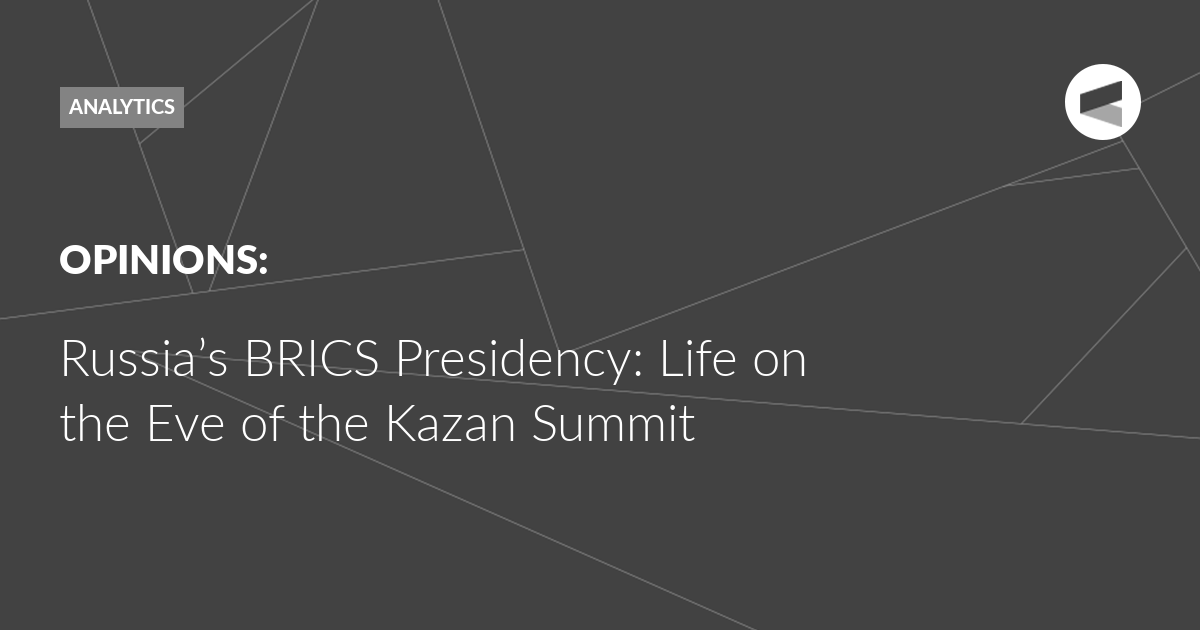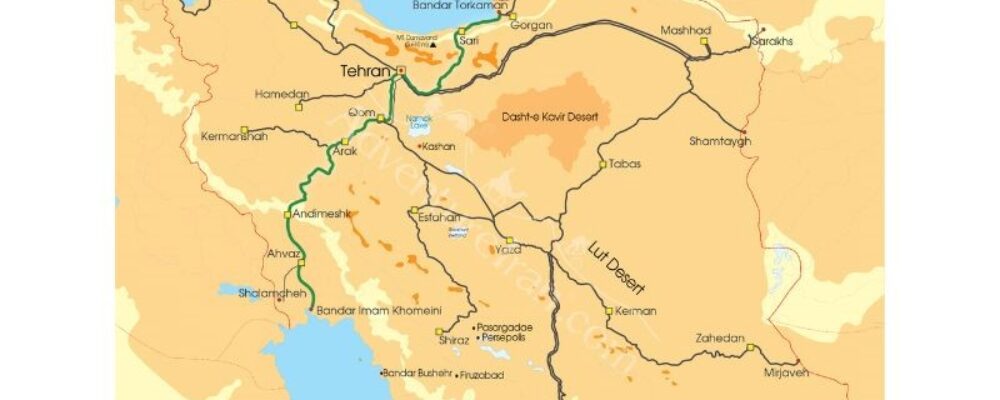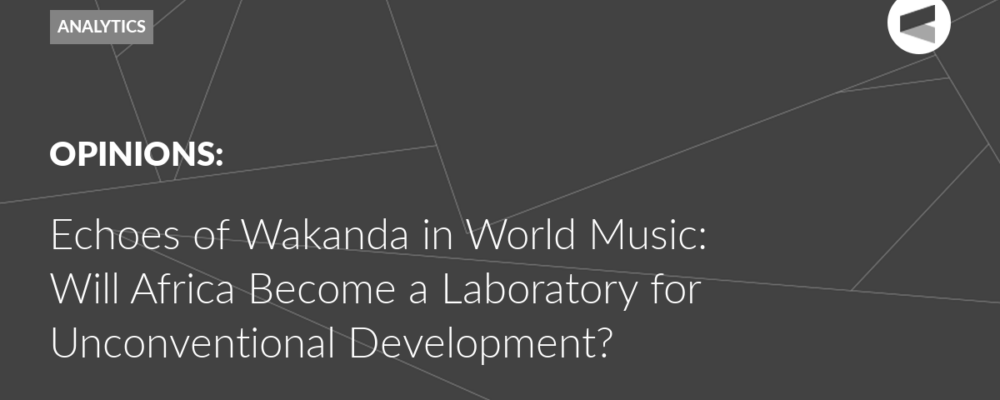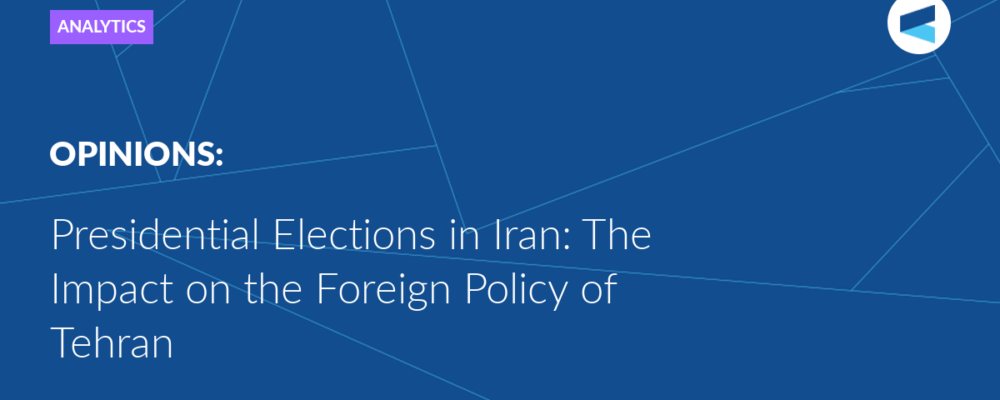BRICS today leaves no one indifferent; its polarising influence extends to the remote corners of the world. For some, it is definitely a “bone in the throat”, while for others – the only beacon of hope in the raging ocean of our world. For still others, it is a complete working tool for reforming the existing world order. Regardless of the polarity of the assessments, no one ignores or denies the strong place of the association in international relations.
Recently it was possible to hear in different places that BRICS wouldn’t last forever, like any informal group with a contrived meaning. However, for the BRICS countries themselves, the main purpose of the group is to reform the international institutions which serve as the bedrock of the existing world order. Accordingly, it must achieve its goal and will disappear once it has served its purpose. Indeed, if we consider the association as a battering ram designed to destroy the ossified system of international relations to which the “elderly states” of the West continue to cling, then we can assume that following the fulfilment of this mission, the need for the association itself will disappear. However, none of the institutions and mechanisms familiar to us today will then be able to survive. It will be a completely different world with a different system, built on the ruins of the previous one. To what extent are we all ready for such a level of turbulence? What will this system be like? To what extent will it take into account the vital interests of all states? Who will be on the presidium? How will issues of war and peace, economic competition and ensuring the well-being of the population of the Earth be resolved within its framework? To what extent will the battering ram that destroyed the previous system be able to agree on its basic rules later? However, it seems that such a view is overly radical. While the BRICS countries see the reform of the system of international relations and ensuring its fairer nature as their highest-priority goal, their ways of achieving this goal are fundamentally different.
BRICS is, of course, both the vanguard of the global majority and leaders in their regions (although after the first expansion the concept of regional leadership was somewhat transformed, indicating the importance of collective weight and a cooperative approach to managing regional processes). However, the author is much more impressed by the comparison of the “group” not so much with a revolutionary vanguard, but with an evolutionary core. If we consider the unification as the core of the process of world transformation, then we can assume that BRICS will not have to spend excess resources and efforts on the process of change. On the contrary, in parallel with the formation of types and models of external behaviour, a process of internal consolidation is taking place: BRICS applies agreed-upon approaches to itself, without imposing them on the outside world. Given the positive economic and social dynamics of the BRICS countries themselves, a larger number of countries will concentrate around the evolutionary core and gradually form a new, sustainable system, based not on coercion, but on development. In fact, in this case, it will be no less important for the BRICS leaders to continue to maintain established ties, agree on a vision and strategy for a further joint path, and maintain the balance of the updated system.
However, it still has quite a long way to go to achieve the desired goals; having to jump through hoops, the association still has a lot to do, especially given growing confrontation and the increasing stakes for the parties. The fact is, that regardless of how convincingly all BRICS members are not anti-Western, for the United States and its allies, such an association is definitely a threat, if only because the “group” has encroached upon the sacrosanct: the basic parameters and principles of a more democratic, more just and inclusive international system, carefully built by Washington after the end of World War II, and, frighteningly, around the very status of hegemon, and instead promoting the principle of equality and mutual respect in international relations. Therefore, it is clear that attempts to tear member countries away from BRICS or to undermine the association will occur on an ever-increasing scale, using both carrots and sticks.
Moreover, this year can be called a turning point for BRICS, and it is Russia as the chair country that is being looked at especially closely. Is it possible to involve new members in the full-fledged work of the association? Have the newcomers seen what they expected? Higher visibility in the international arena and prestige – definitely yes. But the experience of this year has shown that some new member countries saw in the group something like a prototype of a Western-style aid organisation, only with slightly fewer resources than the West, but at the same time not limited by political conditions. Joining BRICS would solve existing financial and economic problems through the distribution of appropriate funds.
Some did not understand the lack of automatism of joining BRICS and joining the New Development Bank. Although BRICS does not entail donors and recipients of aid; it’s not about leaders and followers, BRICS is about building mutually beneficial ties and promoting projects and programmes aimed at long-term and sustainable development, but this is a road with traffic in both directions. Therefore, it is not entirely correct to say what BRICS will give me if I join the group. Everyone contributes their share of the pie so that the overall benefit becomes greater.
However, despite the sometimes-inflated expectations of immediate bonuses, as well as the unexpectedly intensive work for newcomers in a large number of areas, both the official track and the second diplomatic track
, the initial integration of the expanded BRICS can be considered quite successful. Today, in the context of discussions, it is not always possible to guess who is working together for the first year within the association, and who is already a recognised veteran. At the same time, this renewed vigour raises the question of the need to preserve the so-called institutional memory of the association.
The creation of a common BRICS platform based on distributed ledger technologies with independent national sections, containing all documentary and analytical information from the start of the association, online negotiation tracks, position papers, thematic projects and the ability to intelligently search with different levels of access for members and partners, officials and representatives of the second track will ensure the continuity of presidencies, as well as quickly delve into the work processes for both potential new countries and new participants in the negotiation process within the country. At the same time, the main disadvantage of international organisations will be absent – excessive bureaucratisation and unfounded claims of the secretariat to manage the content. It can be called a virtual secretariat, as was once proposed and even approved by the leaders, or a BRICS communication platform.
In any case, a positive side effect could be the construction of a holistic picture of what the group has achieved over the past decade and a half and a revision of approaches to solving existing problems, possibly taking into account the experience of new members. A direct bonus would be the opportunity to immediately immerse new member countries in upcoming negotiations and actions; not only in terms of content, but also in terms of organisation (as an example, we can cite questions about the process of promoting initiatives in the event when a country is not the chair).
We should understand that BRICS will not be able to simply close its doors to the remaining candidates. The author has nevertheless repeatedly said that pursuing developments too rapidly could negatively affect the effectiveness of the club. We already understand that doubling the number of participants already requires much greater diplomatic efforts than before. Moreover, within the group there are at least three pairs of countries for whom not everything is so smooth in terms of bilateral relations. Earlier Sergey Lavrov has said that the current participants have reached a consensus on the need to take a break. This is also why the criteria for partners that can be involved in individual joint projects of the group should be better defined. They should only gradually be drawn into the orbit of BRICS, without further weighing down the core of the structure. The New Development Bank of BRICS stands apart; perhaps after a more thorough familiarisation with the work of all formats, one of the partners will prefer to direct their efforts specifically towards the Bank; at least, such a statement was recently made by the leadership of Algeria.
However, what the BRICS leaders agree on, and this is one of the distinctive features of such informal mechanisms, may completely overturn all assumptions. Although most of the decisions are carefully prepared by the Sherpas with the participation of industry ministries and departments, there is a serious chance of an impromptu decision during the summit itself. If we recall last year, it was discussed that Brazil and India were unequivocal opponents of expansion, but in the end, we saw a consensus decision to invite six new members. Often, leaders are less conservative than their government apparatus and are able to see a more complete picture of what is happening. Moreover, the upcoming summit in Kazan is expected to bring together an unprecedented number of countries and heads of international organisations.
BRICS consistently addresses the topics of reform of international political and financial-economic institutions. Moreover, it was the latter of these that was worked out in more detail at the first summit. Incidentally, it took place a year after the beginning of the global financial-economic crisis, the source of which was the USA. Although the G20 was elevated to the global level, met twice a year since 2008 during the acute phase, and all original BRICS member countries are part of this world economic directorate, it turned out to be important for the four countries (South Africa joined the group, turning it into BRICS only during the third summit, in 2011) to have the opportunity to meet separately, without pressure from the more consolidated G7, and agree on common approaches and principles to issues of global governance and the reform of international institutions. The group’s first success in pushing through the IMF quota reform showed that the countries can achieve much more together. Collectively, the group’s countries have come close to a common blocking share in the Fund
However, this revision was limited in nature and, despite the established commitments, it remains without continuation.
Having become convinced that the Western countries do not want to lose their control and their own advantages within the framework of the monetary and financial institutions they created after the end of World War II, in parallel with their collective negotiating position on multilateral platforms, the BRICS began to form, if not alternative, then parallel institutions. The first in line was the New Development Bank of BRICS, and then there was a need to work on ensuring conditions for independent international trade. Moreover, Western countries have moved to a new round of confrontation, having started to weaponise the dollar and the SWIFT payment system. I repeat, despite the fact that BRICS does not and will not take an anti-Western stance (because a number of countries have quite close relations with the USA and Western Europe), each of the countries understands that it needs insurance in implementing an independent national policy. That is why one of the key issues now is the development and promotion of BRICS’s own payment instrument. It is no secret that it is important for all countries to understand that there is no alternative toward this project. Then there is the lengthy and meticulous work on harmonising the relevant legislation, searching for the necessary technological solutions, assessing the status and capabilities of the national currencies of these countries and much more. There are several models of the development of events which experts have presented which have yet to be finally assessed. Only then can close work begin on the implementation of such a model.
BRICS today is not
only in great demand, it is also simply a “fashionable” project. However, this
fashion for BRICS creates excessively high expectations with regards to the
results of its work. This is precisely what poses the main danger for the
group. Therefore, I would like to urge you not to make superficial assessments
of the results of the upcoming summit. The active fans, while elevating BRICS
to Olympus and ignoring the realities on Earth, very quickly cool down when the
realities force them to remember that Olympus has always been dauntingly out of
reach. There are those who know that the result is achieved with sweat and
blood, and that it is necessary to work hard to ensure that the aspirations of
BRICS to build a more democratic and fair world order will not remain unrealised.
The Valdai Discussion Club was established in 2004. It is named after Lake Valdai, which is located close to Veliky Novgorod, where the Club’s first meeting took place.
Please visit the firm link to site






